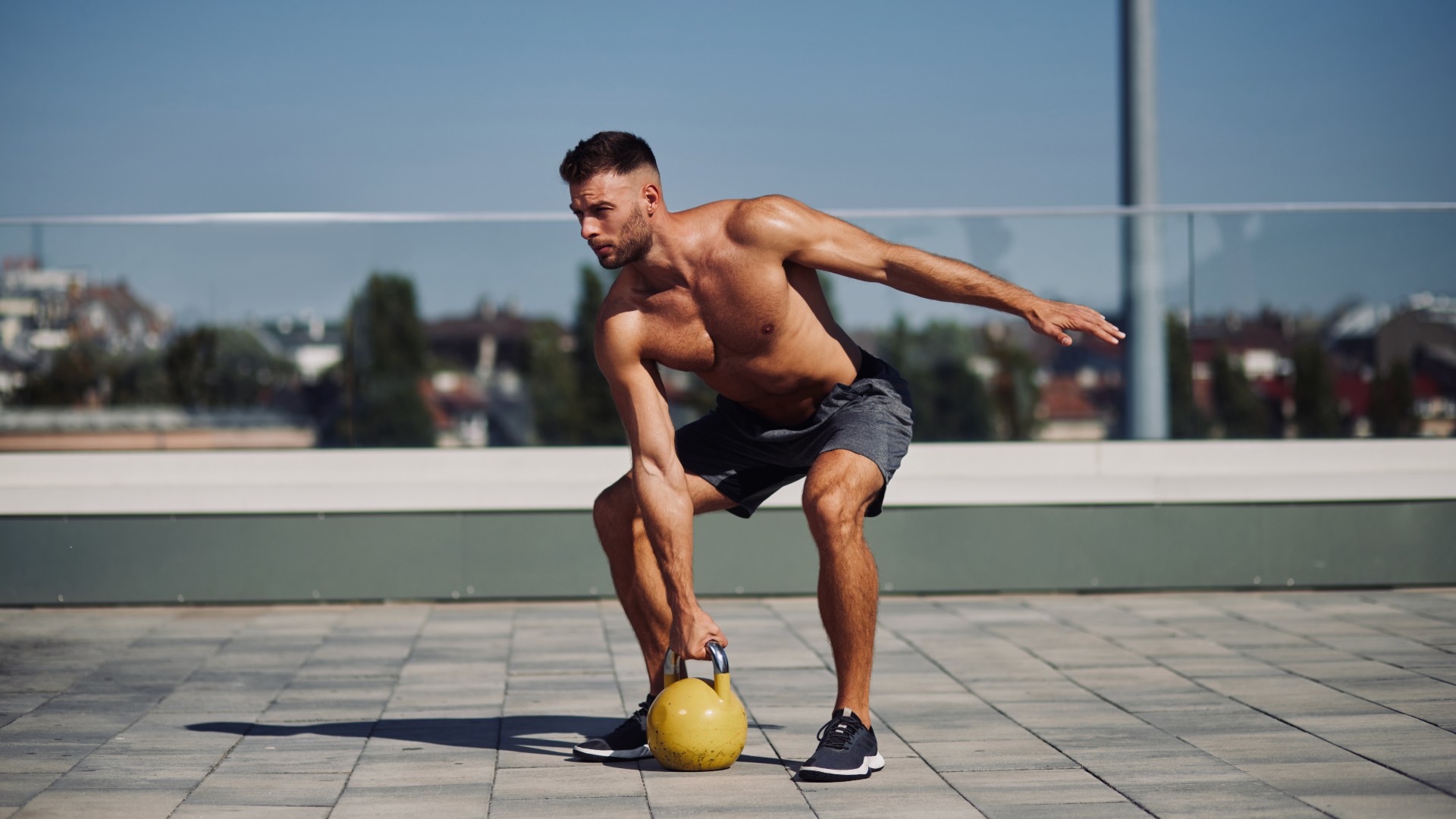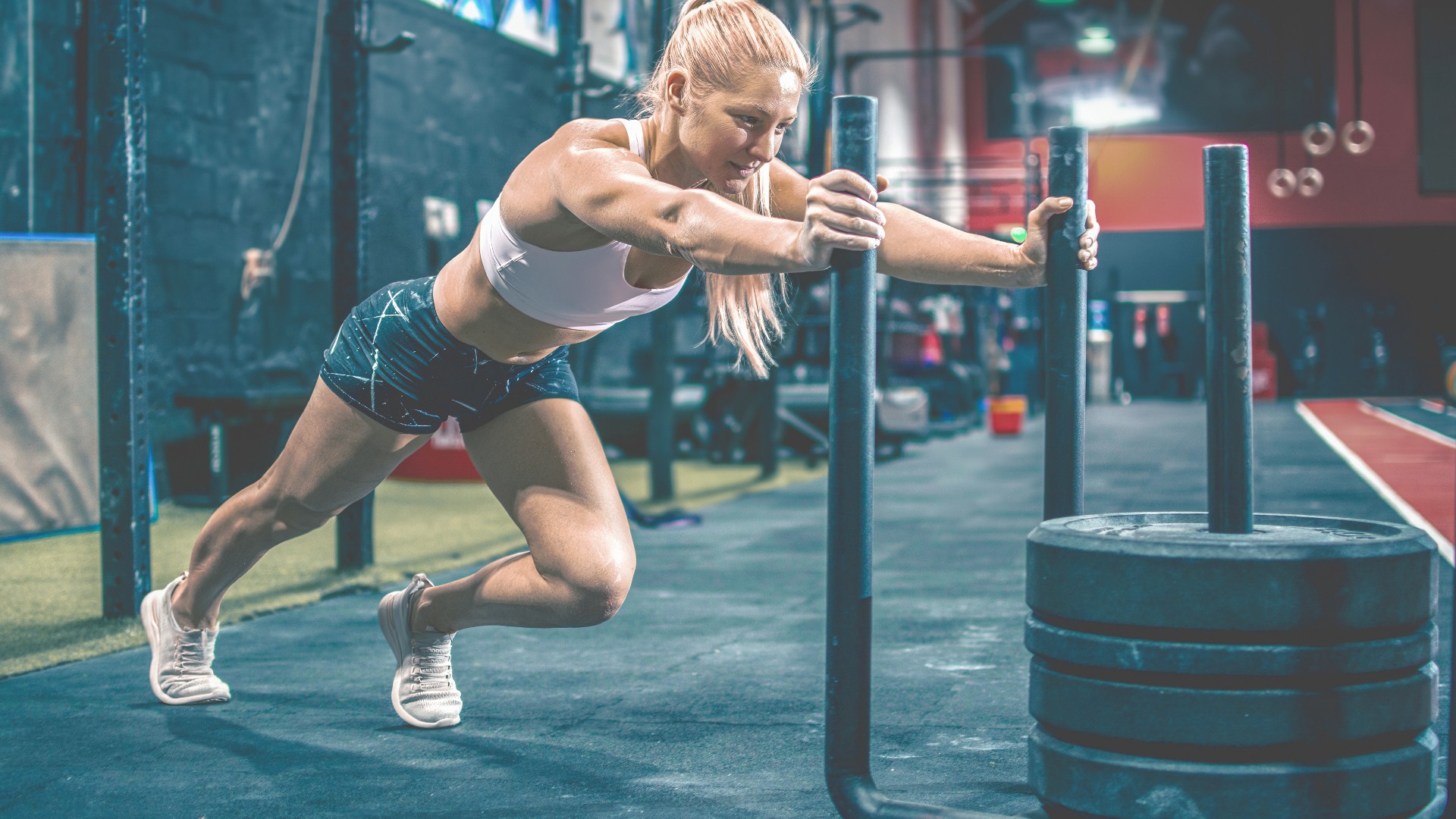
If you had to dial into three strength exercises, 8x veteran CrossFit Games athlete Brent Fikowski says these are the ones to add to your training routine. He’s one of the biggest names in the CrossFit world and knows a thing or two about building strength and muscle.
So we were pretty stoked when he offered up three strength exercises he’d personally recommend if your strength program needs a refresh. These exercises leave typical squats, bench presses and deadlifts aside and target your upper and lower body and core muscles using a set of the best kettlebells for weightlifting, a TRX trainer and the sled.
Those currently working with an injury, returning to exercise, or exercising with back pain like sciatica should always exercise caution and speak with a trained medical professional before starting a new strength training program. If you have any doubts over an exercise, seek a personal trainer or your doctor first and stop if you experience pain.
What are the 3 strength exercises?
1. Kettlebell Z-press
According to Fikowski, the Z-press is a great exercise for building “pure shoulder and tricep pressing strength, alongside working your core to stabilize your torso.” He explains, “I particularly like it as it allows your shoulders to rotate in a transverse motion, which not many typical strength movements do.” Many strength exercises use one plane of motion, but sportspeople must be able to rotate efficiently and move in all planes of motion. Here’s what happened when we did the Z-press every day for a week if you plan to try the move with some variations.
How:
- Sit on the floor with your legs straight in front of you and a kettlebell on either side
- Curl the kettlebells up to your shoulders and hold them both in the front rack position, with your hands and kettlebells pressed against your chest so they rest on your forearms
- Make sure your chest is fully upright with your sternum over your hips to avoid arching your back
- Rotate your shoulders as you press the bells upward overhead. Your elbows should press out to the side, and your arms finish locked out directly above your shoulders.
2. Sled push

Fikowski credits the sled push as a “great full-body movement” that suits strength work (as you can load it up heavy) or speed-focused exercise. “It’s a great way to build strength in basically every muscle in your leg without loading the lower back, which some people need to avoid when coming back from an injury,” he says.
“The calves and feet are strengthened, so are the quads, hamstrings, glutes and hip flexors. Pushing one leg at a time can help to remove imbalances you might experience from squatting or deadlifting with a barbell.”
How:
There are two ways to push a sled. One involves having your arms straight and locked out, which is better for lighter weight and speed. Keeping your arms bent and close to the sled is usually preferred for heavier weight.
Fikowski recommends finding a hand position that feels right for you, but opting too high or low could prevent you from exerting your full force onto the sled. “Having your arms too high can lead to the front of the sled digging more into the ground, creating friction and an inefficient path of movement,” he explains, “whereas too low may not allow your body to be in the most powerful position to exert your body weight to push the sled.”
Keep a neutral spine and engage your core muscles, moving in a straight line. Fikowski says that by driving one leg at a time as you walk, the move becomes a unilateral movement. Drive through your toes (your heel shouldn't touch the floor) and finish each step with a straight knee. “Begin each step by bringing the knee as close to your chest as possible for a full range of motion,” he adds.
Here's what happened when I did a sled push every day for a week.
3. Ring row
The ring row builds upper back strength, which Fikowski says can help improve posture — this is particularly important if you spend your day hunching over a laptop screen or desk.
“Another good variation of a horizontal pull is the barbell bentover row or kettlebell gorilla row, but I like this one as it challenges your core more and has a better carryover to improving my gymnastic skills,” says Fikowski. “Also, rows strengthen your biceps, and who doesn’t want bigger biceps?” We agree.
How:
- Set up gymnastics Olympic rings or TRX handles so they hang above the ground at the height of your hips
- Place your feet on a box or the floor, grab the rings and engage your core
- Pull your body upwards until your chest touches your hands while keeping a straight rigid line from head to toe, then lower back to the starting position.
You can change the angle of your hands to find a natural motion that feels best for you. Increase the difficulty by bringing your feet higher off the ground, or make it easier by keeping your feet on the floor and moving them closer to the rings.







